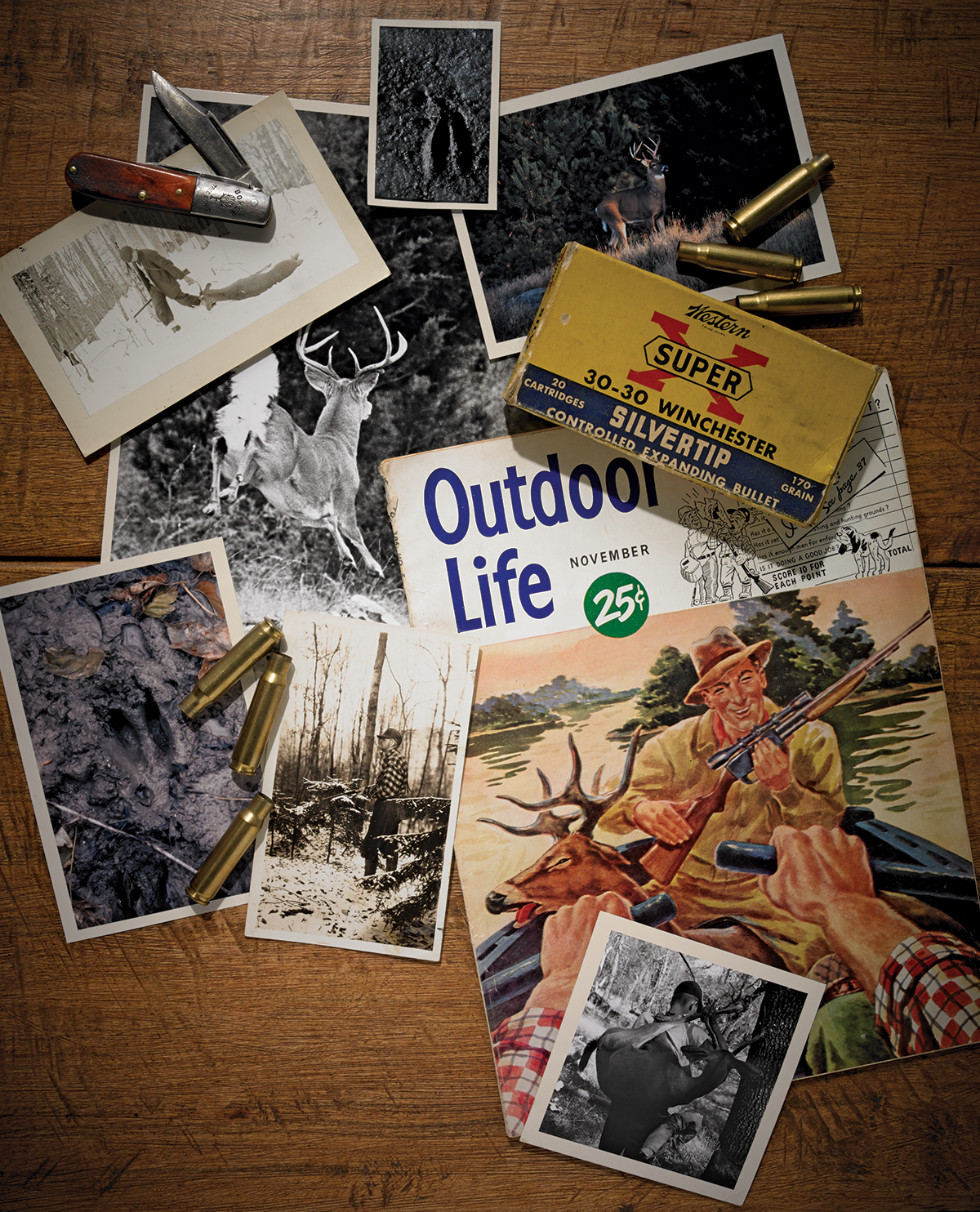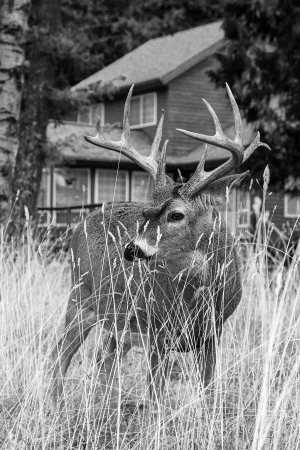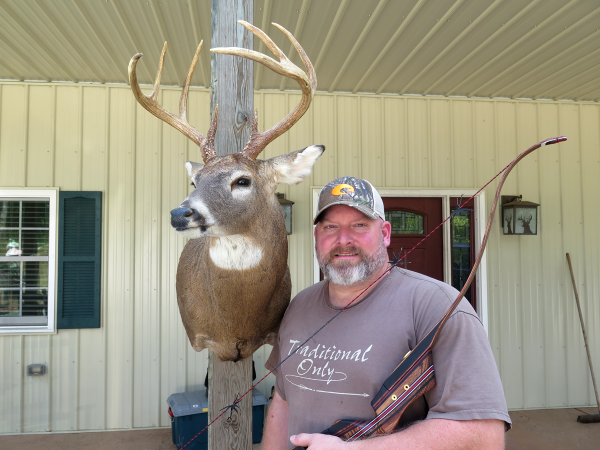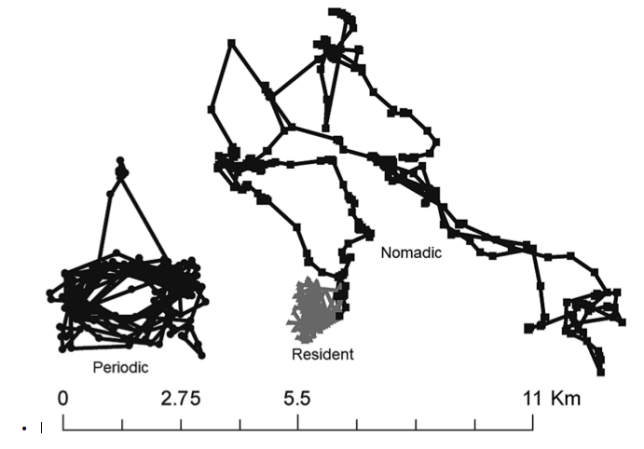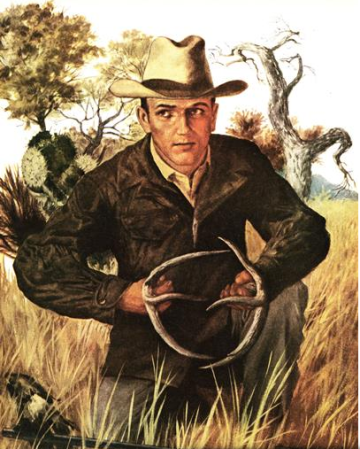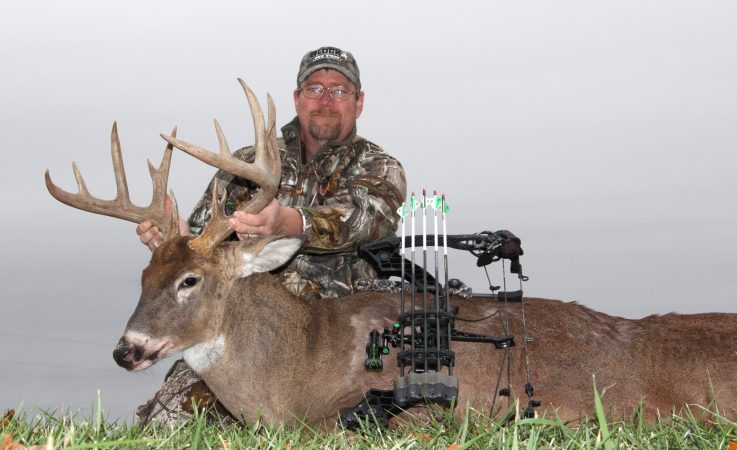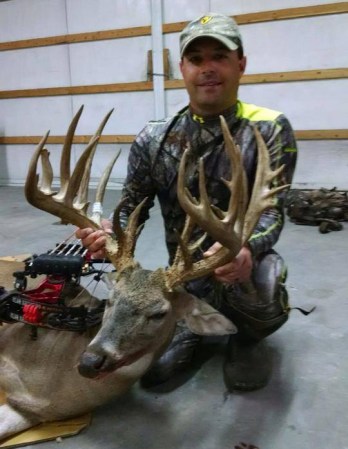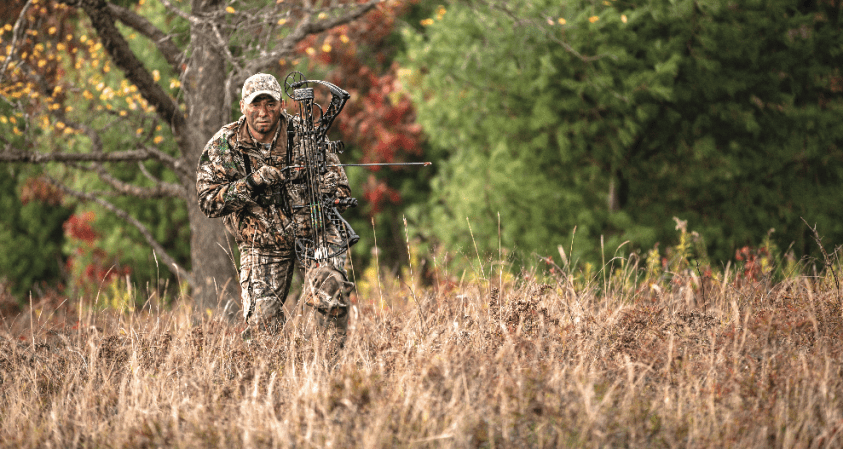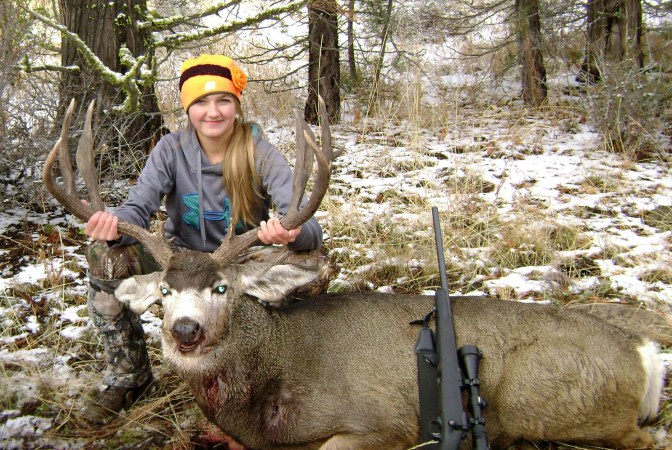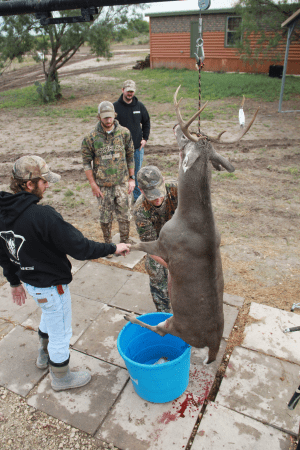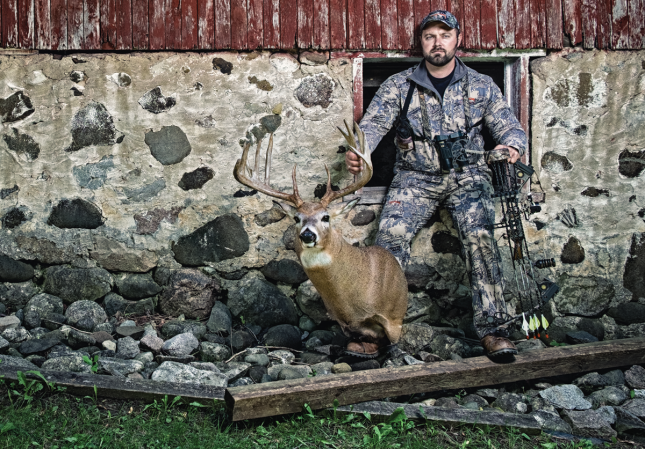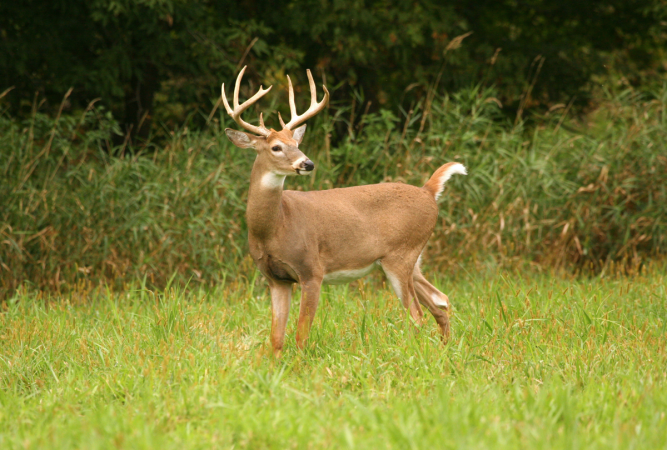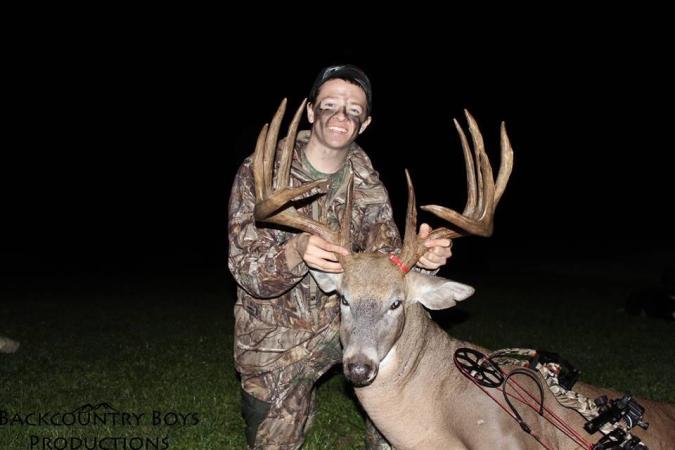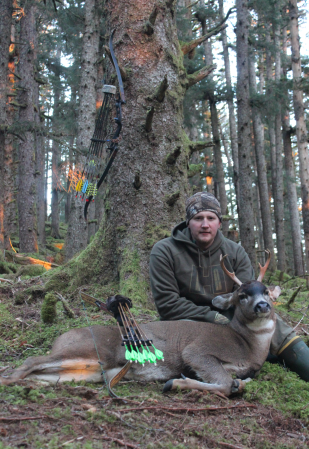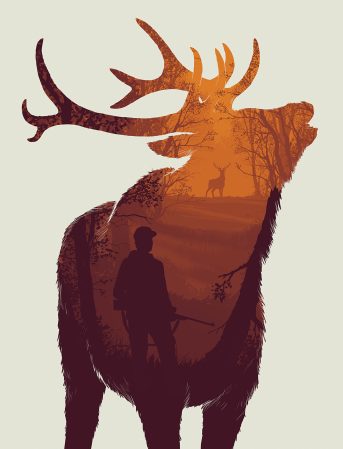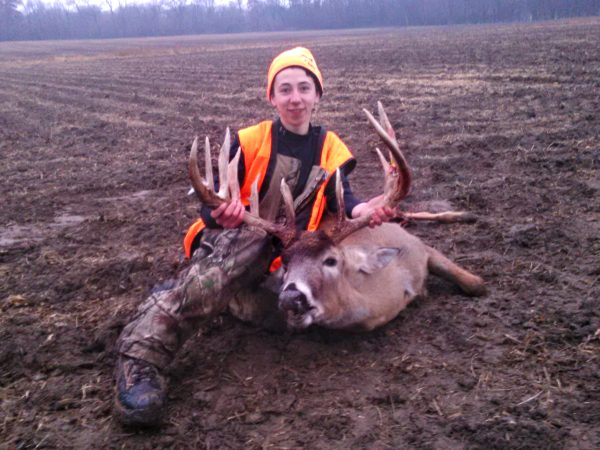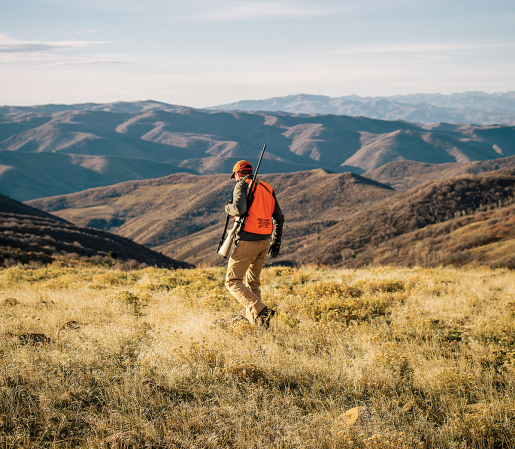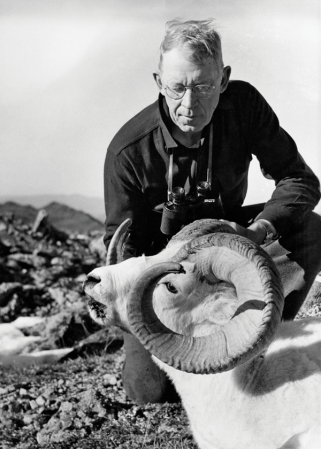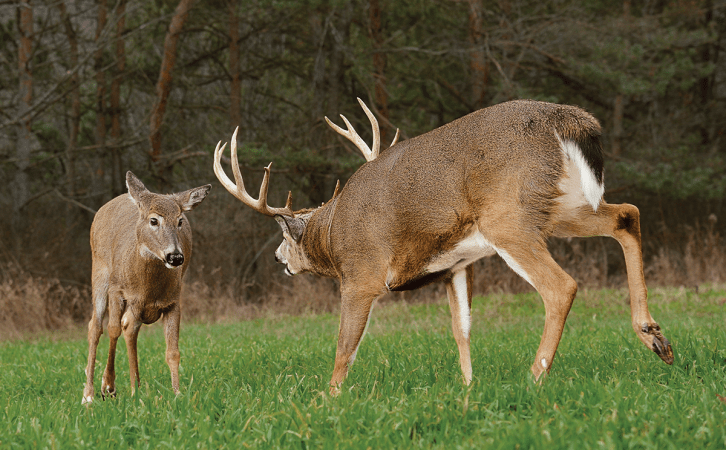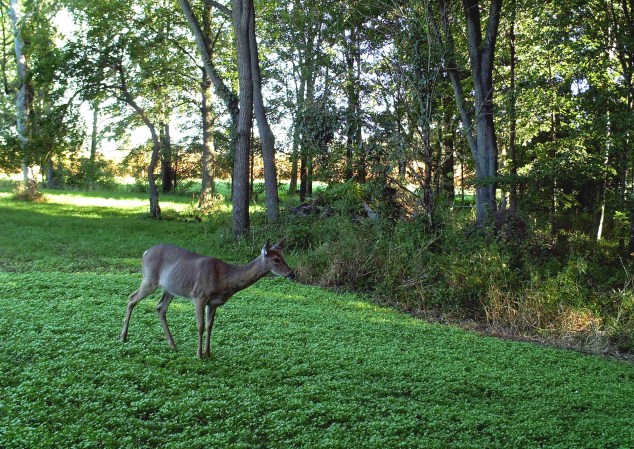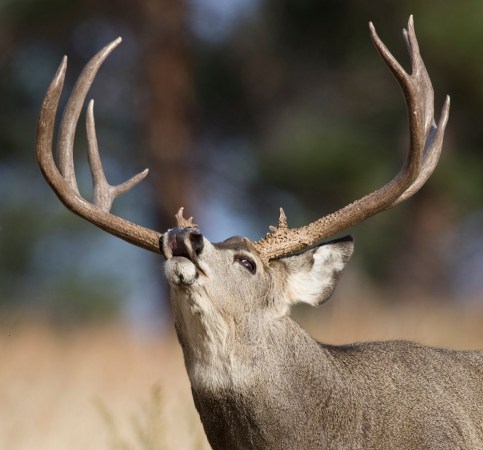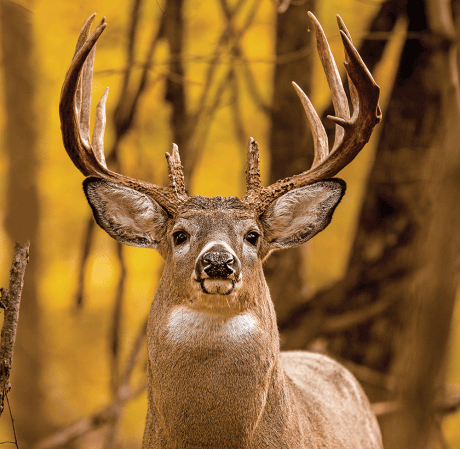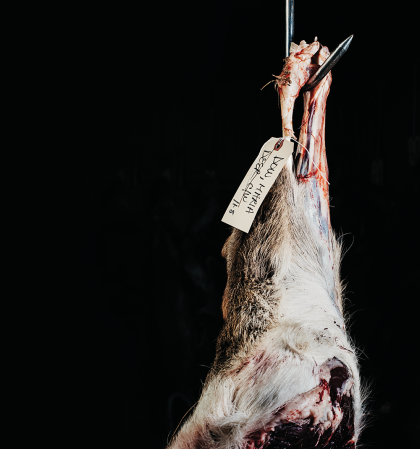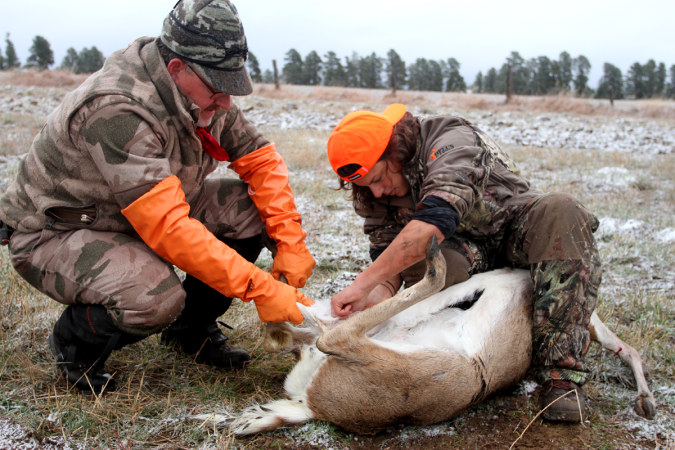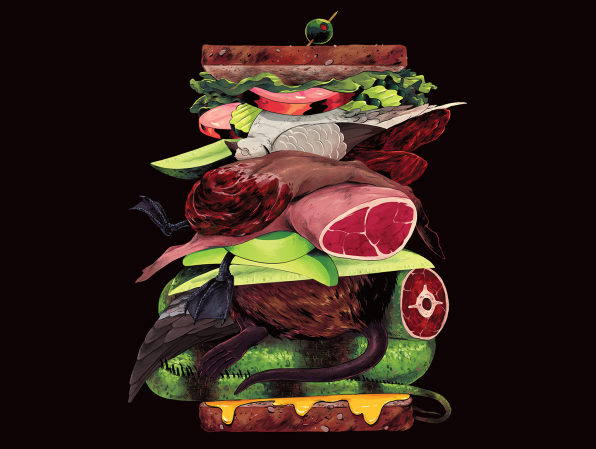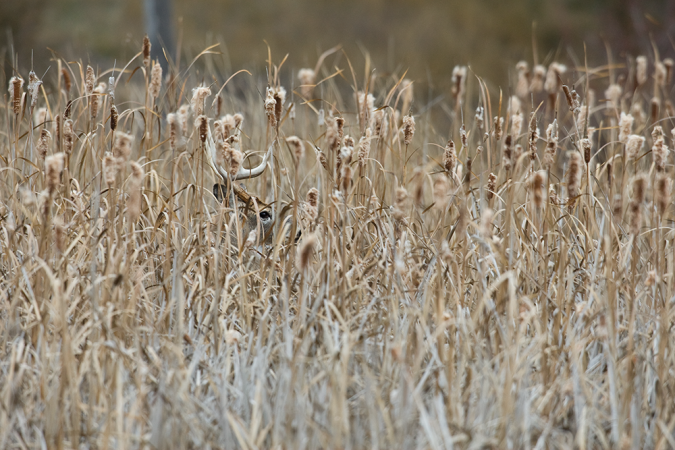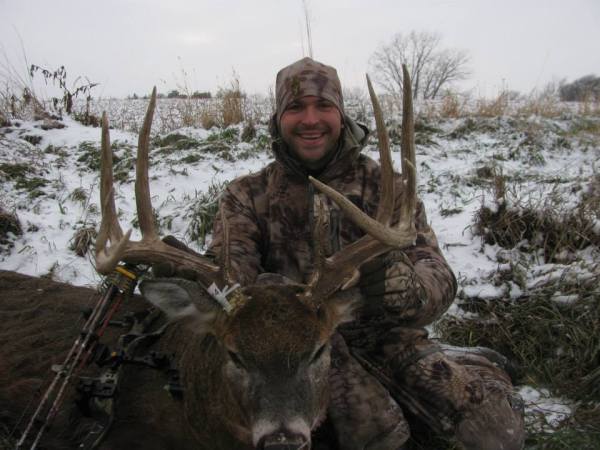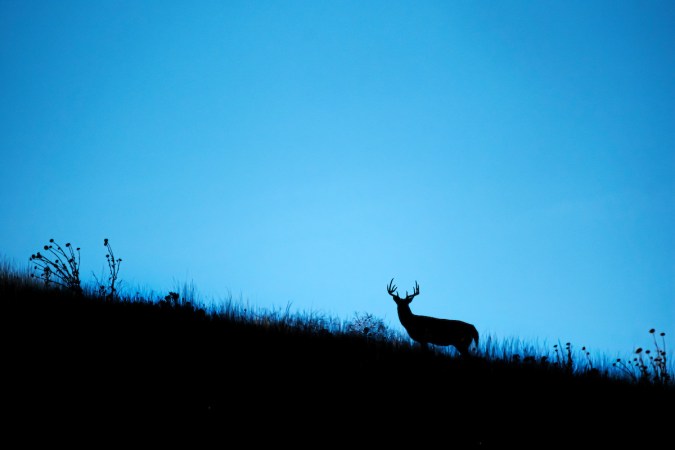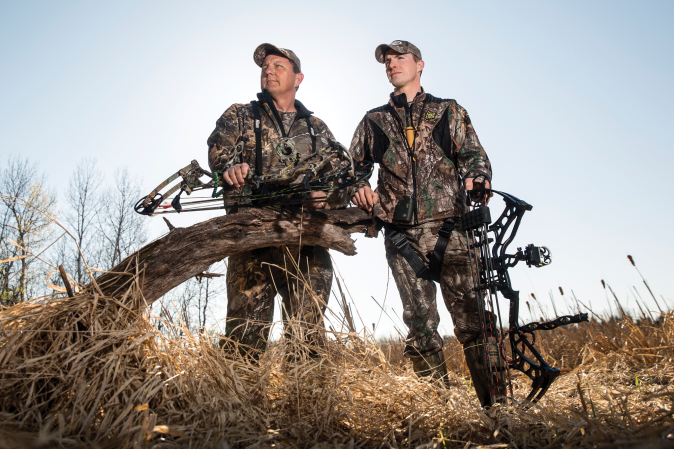Lost in this season’s noise of rut tactics, essential hunting gear, and antler scoring is the reality that, to generations of outdoorsmen across America, deer were once more fiction than fact. For many of these hunters, their first encounter with a whitetail changed their lives. Here are their stories.
We also think you’d like: Stories of Our First Deer
Call of the Wild
By Ron Spomer
The eastern South Dakota farm belt. Early 1960s. We didn’t have much, but we had family and fields, fried chicken, corn on the cob, and Elvis on the radio. Come autumn, pheasants and rabbits were big adventure. A flock or two of snow geese might drop in to grub among the stripped cornstalks, but most merely passed over, their high, wild cries the language of another place.
Imagination was a boy’s best friend. With it he could turn Grandpa’s 2-acre tree lot into Teddy Roosevelt’s African jungle or Daniel Boone’s Kentucky wilderness. The fringe of young cottonwoods along the creek was the Amazon, the Zambezi, the Yukon. With homemade bows and broken BB guns, we hunted everything from elk to elephants, pronghorns to polar bears. But the wildest big game we ever saw were the milk cows, which seemed less than impressed with our stalking skills.
That changed one July when Aunt Frieda exploded through the kitchen door. “Deer! Deer! Deer!” she hollered. We rushed outside, the screen door slapping behind us, and stood on the stoop, dumbfounded. There, flashing through our green corn leaves, leaped three red, long-necked, long-legged deer. A doe and twin fawns, tails high, wide, and flashing through the field, headed to the cottonwoods and the creek. “Deer,” my aunt half-whispered. The first she’d ever seen. “There they go. It looks like they’re waving goodbye.” But those white tails weren’t waving goodbye to me. They were waving me over, calling me to follow, calling me home to a place I’d never been before, and from which I would never return.

Spomer with a Black Hills buck, 1981.
Show and Tell
When I was a kid in Missouri in the 1960s and ’70s, if you killed a deer, you had to stand up in front of the class and tell your story. Any guy carrying a deer foot between classes in high school was a friggin’ rock star. —Ray Eye
Saluting the Flag
By Gary Giudice
I belonged to a small Boy Scout troop in Arkansas’ Ozark Mountains. This was back in the early ‘60s. At one of our monthly meetings, the scoutmaster arrived late and excited. He did away with the normal agenda that evening and loaded the entire troop into a couple of cars so he could show us a surprise. Off we went down the winding roads of the Ozark National Forest to a beautiful glade. In the middle of the clearing were some flags, similar to little surveyor’s flags, placed in a tight circle. The leader gathered us around the flags to show us a single deer track.
We didn’t know what to say. None of us had ever seen a track—much less a deer. To us, they were animals found in a zoo—hapless critters bound up in small enclosures that schoolkids tried to feed cotton candy to. Some thought the track was a fake planted by our scoutmaster. To me, it was the beginning of a lifelong obsession with the whitetail. My dad took me back to that spot several times, and finally, one early morning, we actually saw a single doe. My dad and I looked on, amazed and speechless, at the small, scared creature. The doe soon scampered off, its white flag waving, leaving us dumbfounded. I’ve shot and eaten countless deer since then, even some that could be classified as “monsters.” But none have made my heart thump harder than that first doe.
The Strike Breaker
By Michael Babcock
Hunting grabbed me at an early age. But my father did not hunt, so it was a surprise when he woke me before dawn and said, “Let’s go look for deer.” A strike had closed the Iowa packing plant where he worked, and he had time on his hands. At a spot in the hardwoods, we got out of the old Buick just as the cold November sun peeked over Cemetery Ridge. A trail through the bare trees was pounded down with deer tracks.
The deep woods are magical to a 14-year-old, and I fell behind. My father was well ahead of me when he shouted, “Hurry up!
There’s a big deer up here!”
Across a ravine, a whitetail buck ran through the trees to the edge of a pond. The buck seemed to know we were unarmed and stared at us before trotting into the woods. His antlers were wide and a strip of dark hair ran down the length of his back.
We watched without speaking, and then headed back to the car.
Because of the strike, we were broke, but Dad drove to the diner where his work buddies hung out. I don’t think my dad carried a lot of weight with his co-workers, because he didn’t hunt, but as he talked about this deer we had just seen, the din in the café died down and everybody listened in. My father’s stature grew a little in my eyes that day. And that first buck remains as clear and crisp in my mind as the November sky at dawn.
Possession
By Ryan Kirby
My grandpa, Ron Kirby—or Papa, as we call him—was a farmer. He drove beat-up trucks. He fished with large red-and-white bobbers for bluegill in ponds that smelled of livestock. “The smell of money,” he liked to say. He straightened used nails and saved them in tin Folgers cans. And he hunted deer.
The first deer season in Hancock County, Illinois, where four generations of my family were raised, was in the fall of 1962. My grandpa was 32 years old. The method of hunting that Papa and his neighbors practiced was called a “man drive.” They knew that a group effort was their best shot at killing scarce deer. But the first days of that first season didn’t go well.
By the last day of that first shotgun season, their five-man group had yet to kill anything. Undeterred, they set out to push a wooded section of Papa’s farm. Halfway through, they kicked up a buck, and I can only imagine their excitement as it burst from the brush and ran away from the drivers down into a creek bottom. Homer Sherrill was the first to fire at the deer, grazing him in the hind leg with a 20-gauge slug. The buck continued to run full-bore into the open and past Papa, who dropped him with his Ithaca Model 37 12-gauge.
Papa ran over to the dead deer, in awe at the sight of a deer up close and thrilled because it happened to be a nice buck. Homer hustled over, laying his claim to the deer, which had obviously not been mortally wounded by his shot. He wanted badly to have the deer mounted. As the five neighbors gathered round the felled whitetail, everyone knew it was my grandpa’s slug that put him down. It was the first deer killed in our township in anyone’s memory.
These days in this situation, tension would have filled the air like dust in a grain bin, and maybe even the game warden would be called. But these guys were buddies, and they were neighbors, and when you hunt in a group, you kill deer together. Without drivers to walk the brush, the setters have nothing to shoot at. So my grandpa conceded.
“Okay, Homer, you can have his rack,” Papa said. “But I want his feet.”
So he cut the feet off and took them to a taxidermist, who turned the hooves upward and screwed them to a plaque to make a gun rack. For decades Papa proudly hung this trophy in his home. In a scrapbook he kept the article that the local paper wrote about the deer.
Years later, my dad bought that land from Papa, and he and my mother raised two sons on that farm. Three generations of men learned to hunt there. Soon it will be four. Papa is still alive and well, but last fall I brought the gun rack home with me. At some point over the years, one of the feet started coming loose. Rather than use a fresh screw to fix it, Papa just hammered a couple of old recycled nails into the back to keep it from wiggling. Because what farmer would waste a brand-new screw when an old, straightened nail from a coffee can will do.
Can’t get enough old stories? Read more first deer tales here
Homesteaders
By Marty Egeland
I grew up in Edmore, North Dakota, just about halfway between Devils Lake and Canada. That’s where my dad’s side of the family has lived since emigrating from Norway. His grandfather and father never hunted. The only game around back then were waterfowl and Hungarian partridge, plus some remnant prairie chickens and sharptail grouse that they simply called “chickens” because they didn’t know the difference between the birds.
My dad saw his first whitetail as a teenager in 1962 or 1963. Back then, if you wanted to shoot a deer, you either went out West or to the woods. There were no deer on the prairie, a fact that our modern deer hunter has either forgotten or never realized.
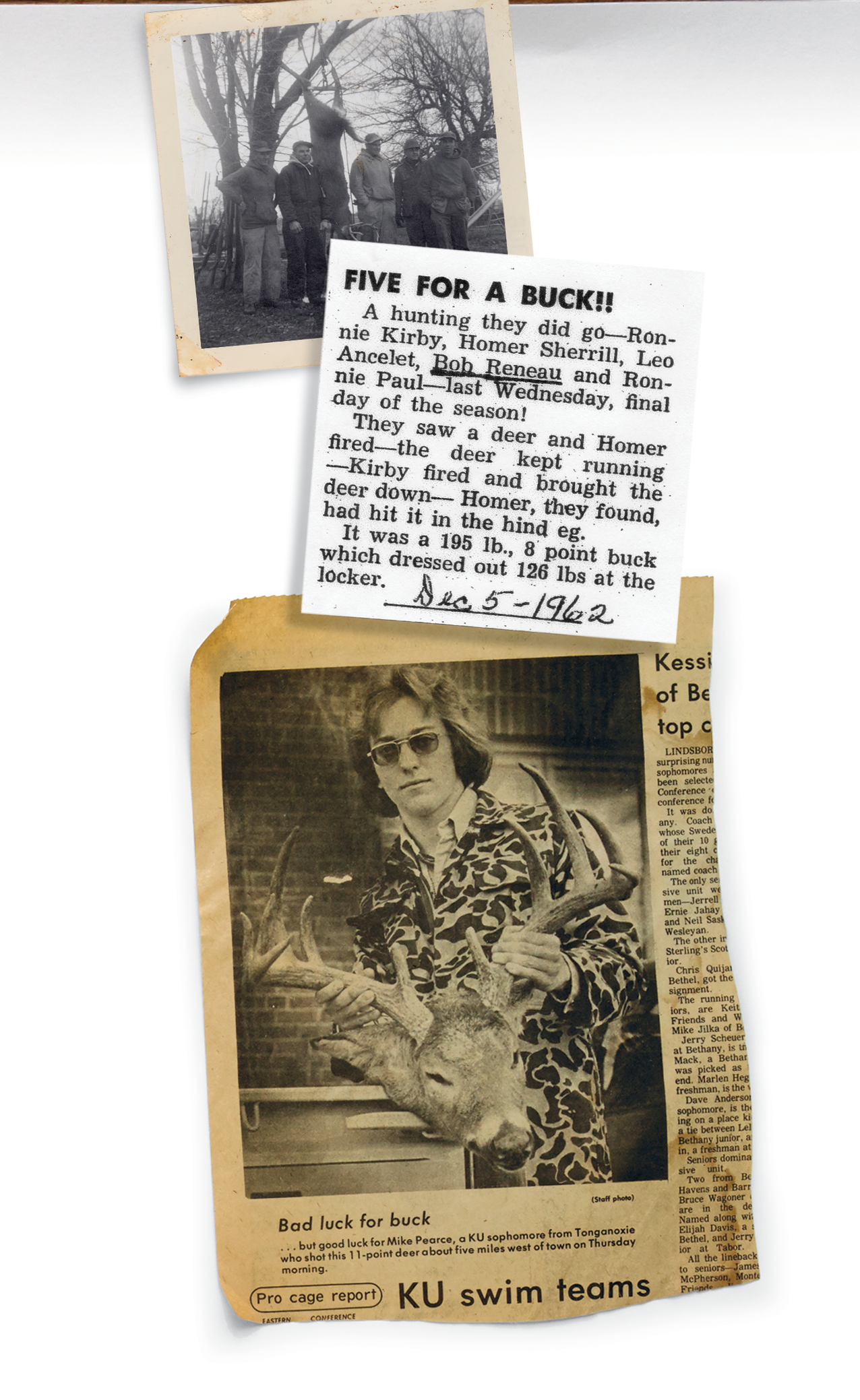
Lovestruck
By Michael Pearce
I remember far less about my first kiss than about the first time I saw a deer. That’s no slight against the dark-haired lass named Debbie. It’s just that seeing a deer was that big of a deal in northeast Kansas when I was a kid.
I had the slickest crew cut in Tonganoxie because of all the time I spent at Thompson’s Barber Shop. If I sat there long enough, someone would come in with a story about somebody seeing a deer. Then, in the fall of ’65, just before Kansas became the last state to open a modern deer season, I saw one.
We had gone to a friend’s farm to check on his animals. As we pulled into his drive, two deer stood on the edge of his lawn. In the long light of late evening, they seemed to glow. I remember the coal-black eyes, the white ring around their muzzles, and, my gosh, the antlers. Nothing from my childhood is as seared into my memory as those two bucks. That includes the surprising lip-lock placed on my mouth by Debbie several years later. But maybe her heart wasn’t totally in that kiss. Maybe it was her way of keeping me from talking about deer and deer hunting. As Debbie now knows, after 35 years of marriage, that’s just never going to happen.
Hunting by the Quart
By Ben Long
My hunting mentor, Gary Sloan, measures bucks in quarts, not Boone and Crockett points.
Gary was born in 1932, the Dirty Thirties. His family homesteaded a stump ranch on the rainy western slope of the Cabinet Mountains in Lincoln County, Montana. His father cut and sold cedar fence posts for cash, but the family survived on a big garden and wild game.
“Game meat was very important to us,” Sloan remembers. “That was pretty much true of most of the people that lived there in those days.” Venison was canned in mason jars, alongside garden produce. A big buck supplied 30 quarts of meat.
During the Great Depression, the imperative to feed one’s family often eclipsed loyalty to hunting regulations. Deer populations were cropped short.
“A standard way to hunt when I was young was to look for one set of deer tracks, no matter how old they were, and then just stay on those tracks all day, and maybe the next. Now you can go out and just about everywhere you look, there’s another set of deer tracks.”
Gary killed his first deer—a young whitetail buck—at age 9, shooting his father’s .30/30.
In the decades after World War II, logging converted a carpet of mature timber in Lincoln County into a patchwork of shrub fields and second growth. Population-crushing snows became less frequent. Hunting regulations took hold. Whitetails boomed.
Sloan, now 83, has watched deer populations rise and fall over the decades, particularly after a hard winter. As whitetail numbers climbed steadily in the 1970s and ’80s, they provided a prey base for growing numbers of mountain lions and, more recently, wolves.
He also has noted an increased interest in antlers among hunters, and less emphasis on meat.
“There was a time when I was interested in shooting large bucks and bulls, but I grew out of it. I shot a big buck when I was about 17, but no one in my family would touch it because it was so tough and rank. I had to eat every piece of that deer myself, and it took a while.”
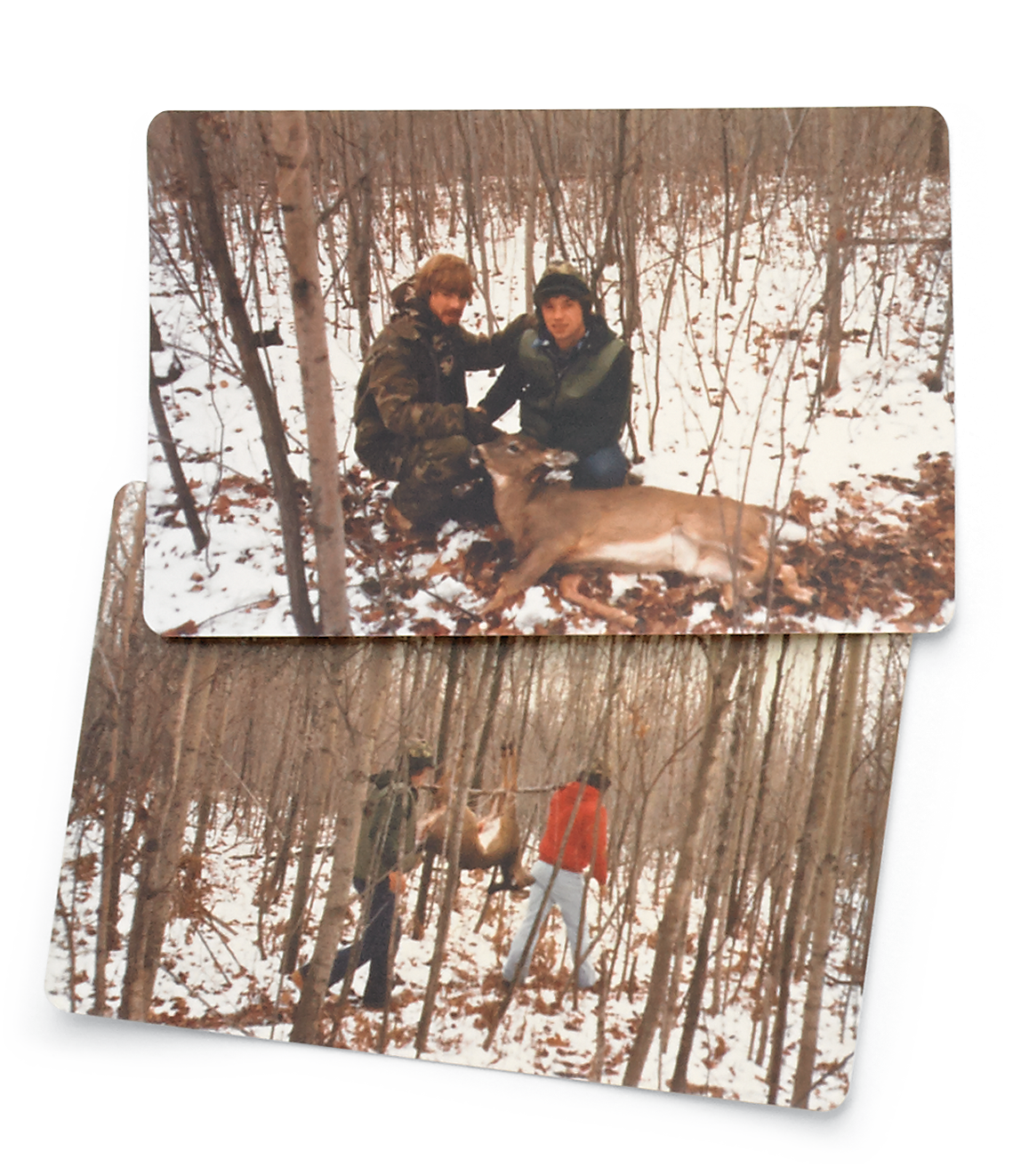
Rural Route
One morning, during my long bus ride to school across the farm country of northwestern Ohio, the bus driver spotted three deer standing in a freshly planted field. They were the first deer any of us had seen. The driver stopped the bus in the middle of the road for some time and we all looked in amazement at those brown beasts, forgetting all about school. And traffic. At her next stop, the driver asked to use the phone and called the local newspaper. —Doug Jeanneret
Holiday Gift
By Craig Dougherty
In the early 1970s, I moved my family to a little farmhand tenant house in the hardwoods north of Syracuse, New York. With plenty of energy and not a lot of money, my favorite pastime was walking in the woods looking for grouse and, as a Pennsylvania deer hunter, wondering if a whitetail could ever survive in this snowy country.
Then one day, I cut a track. Two years later, I saw my first tail bouncing through the woods, and then there were more. Three years after I discovered that first track, I slipped out one Thanksgiving morning, figuring, What the heck, why not take the slug gun along? Two hours later, my 3-year-old son, Neil, and I were counting points (all 8 of them) next to the garden out back. It is still the best Thanksgiving I can remember: homegrown garden vegetables and still-warm deer liver.
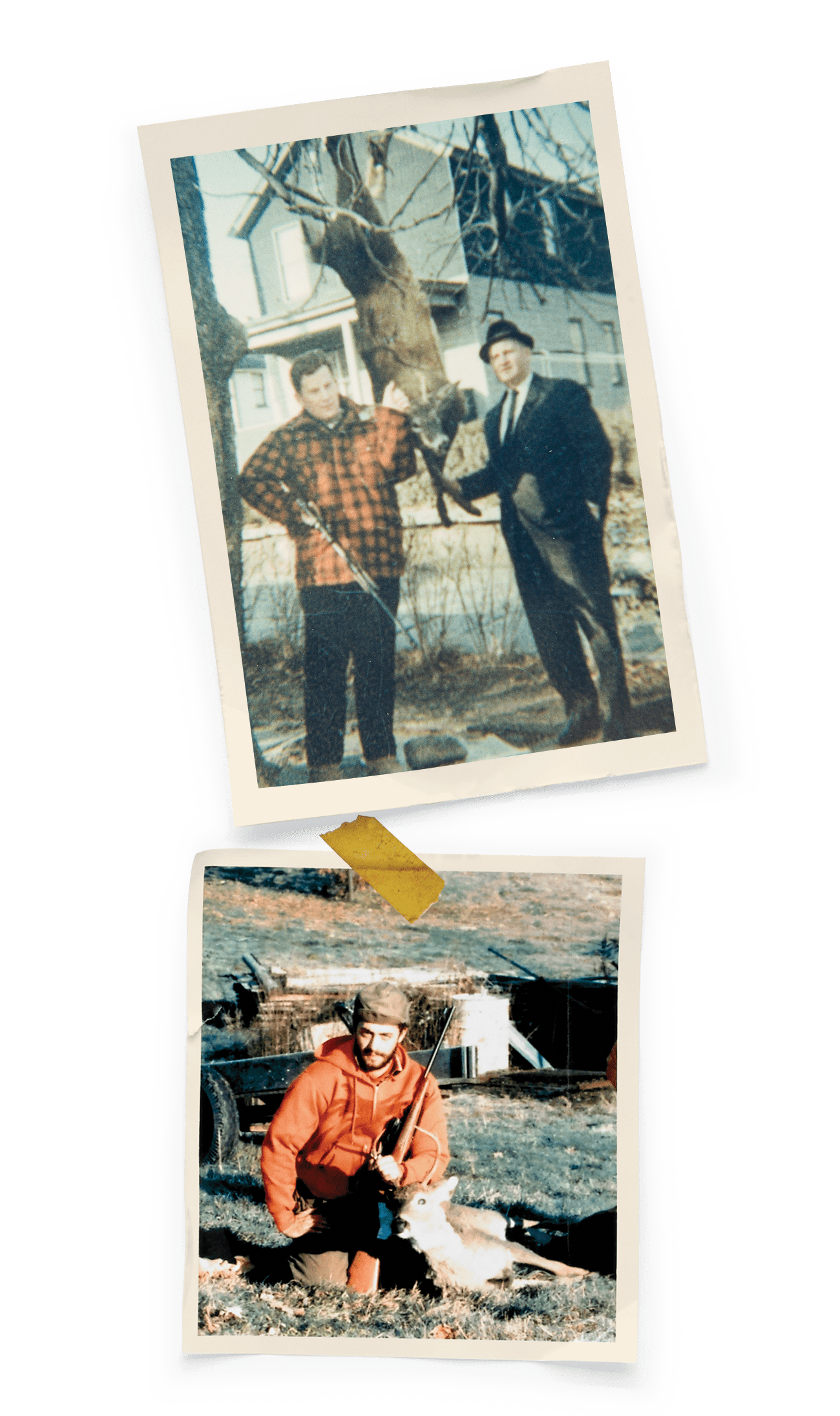
First Glimpse
By __Bob Humphrey
I was probably six or seven years old. It was the mid 1960s, and my family was enjoying a late summer day boating along the coast of Massachusetts, roughly 20 miles north of Boston.
We’d anchored up for the night and finished a meal cooked over open coals in a hibachi on the transom. The evening air was cooling when my dad asked, “You up for a little adventure?” That caught me totally off guard. It would be dark soon, and time to head for the bunk. My dad sometimes went off night-fishing for stripers, but I was never allowed to go along. I wasn’t about to pass up this opportunity, whatever it was.
Dad pulled on the starter cord a few times, the motor coughed, and we putted off toward the sandy beach. We had nearly reached the shore before I mustered up enough courage to ask where we were going. “To look for deer,” he replied.
Deer?! My mind was abuzz. To that point, I don’t think anyone had even spoken the word in our household, and I later learned that those who hunted them had to drive three hours west to the Berkshires, or at least that far north to Maine.
My growing flood of questions was cut short as we topped the first sand dune and Dad cautioned, “We need to be quiet now.” As he peeked over the dune grass, I noticed a sudden change in his body language as he tensed, then turned and urgently waved me on. “Stay low,” he said.
My eyes caught sight of three reddish-brown spots that stood out boldly against the green expanse. They seemed almost to glow in the waning daylight, and I was completely awestruck. It would be more than a decade before I saw another.
I can’t say it was the deciding factor, but that sighting certainly influenced my decision to pursue a career in wildlife biology. By the 1980s, I was in graduate school and well on my way to becoming an accomplished hunter. The deer population had reached nuisance level, and I was invited to participate in a controlled hunt in the same area where I caught my first glimpse of that rare creature. In a way, both the deer and I had come full circle.
Bumper Crop
By __John Taylor
I grew up in northern Illinois, just 14 miles south of the Wisconsin border. But when I was a kid, if you wanted to hunt deer, you had to go to the northern part of Wisconsin.
The first deer I saw in Stephenson County, Illinois, was one my dad hit with his company car. My mother and I had to drive out to pick him up, as it pretty well did in the grille and radiator. That was about 1952. One did not routinely see deer, and it wasn’t until about 1958 that Illinois instituted the first of its three-day deer seasons. I worked the Freeport, Ill., check station as a Scout project, and I recall that the deer brought in were much larger than those I see now in Virginia. In fact, during my first Virginia deer hunt in 1971—a drive-and-post affair at Ft. A. P. Hill between Washington, D.C., and Richmond—I saw what I assumed to be three wild dogs approaching me, only to have them turn and reveal themselves to be whitetails.
Taking a Stand
By __Dennis Highby
It was 1957, and I was 8 years old, helping my dad with chores, when I heard shots east of our farmhouse. My dad said it was the first deer season in Cottonwood County, Minnesota.
From then on, I spent all my time hunting—not only deer—and I didn’t go anywhere without my bow, a 40-pound Bear Panda. You could say I grew up in the woods, but I never saw a treestand until the 1960s. Up until then, the only stand you might see was a couple of 2x4s nailed in the trees. If you wanted hunting gear, you went to the army surplus or to the hardware store.
Career Path
By __Brian Murphy
I grew up on a small farm in rural northeastern Oklahoma. There were rumors of deer in Cherokee County, but I had never seen one or even met anyone who had. In the mid 1970s, when I was around 7 or 8, I was riding my bicycle down a dirt road that led to our nearest neighbor about a mile away when I encountered my first evidence of deer—a set of tracks crossing the road. Having been a voracious reader of Outdoor Life and Fur-Fish-Game, I was confident these were actual deer tracks.
I pedaled home with the zeal of an archaeologist who had just discovered the missing link to ask my father to accompany me back to the site. Though my father was not an avid hunter, he had hunted mule deer with his father in New Mexico as a young man and he quickly confirmed my finding.
Later that year, my father called everyone in our family to the back window of our house, which had a view of the back pasture. Underneath a couple of post oak trees stood three whitetail deer feeding on acorns. I couldn’t contain my excitement. I was actually viewing deer for the first time, and this moment changed my life. I immediately wanted to know everything about them and, of course, to hunt them one day—and soon. The following spring, while traversing our land with BB gun in hand, I came face to face with a doe coming down the trail I was following. My connection with deer had advanced from track, to sighting, to close encounter, all within the span of a little more than a year. I was forever hooked.
A year or so later, we moved to town (Tahlequah, where the Trail of Tears ended) and I met a Native American boy about my age whose father was a deer hunter. We quickly became good friends, and soon I had my first invitation to actually hunt deer. I was 11 and armed only with a single-shot 20-gauge, but it didn’t matter. I would soon be a deer hunter. Looking back on it, my friend’s father actually knew almost nothing about deer or deer hunting, but neither did anyone else back then.
When the big day came, I was excited to learn that we would be hunting only about a mile from where I saw my first deer. Unfortunately, I didn’t see a single deer during my first or even second year of hunting. But nothing was going to dampen my enthusiasm, which hit a fever pitch the next year when, at age 12, I read an article in Outdoor Life about a wildlife biologist who worked with deer. I immediately knew this would be my career.
The Other Texas
By __Russell Graves
When I started hunting in the 1980s, Texas’ deer populations were concentrated in the Hill Country and South Texas. My county, Fannin, in northeast Texas, was mostly devoid of deer. Only a small pocket existed in the extreme northeast corner of the county, in the federal woods along the Red River.
My older brother and I would try, like hundreds of others, to kill a deer during the five-day season that existed back then. I hunted for six seasons before I ever saw a deer.
In the first days of winter in 1987, I saw my first deer track as I walked into the woods near our home. The following summer, we saw a few deer on our place, and by fall, we decided to hunt the property. I built a wood platform high up in an oak tree.
A week into that season in 1988, I shot my first buck from that old stand. A day later and from the same stand, my dad shot an almost identical buck standing in the same spot. Since then, we’ve killed many bucks on the place. In fact, across Fannin County, a couple of 200-inch deer are taken every year by hunters, along with plenty in the 150-plus-inch range.
Uncle Paul
By J__ack Reneau
Looking back on it, I guess my Uncle Paul was my mentor, and the first hunter-conservationist I ever knew. He taught me how to climb a hill with the side of my boots, how to identify certain plants that benefit deer and other wildlife, and how to read rabbit tracks to determine their direction of travel. I always wanted to hunt deer with Uncle Paul, but it wasn’t until I returned from Vietnam in August 1968 that I had my first opportunity. I was 21 years old.
That fall Uncle Paul invited me to hunt deer with him and his older brother, Henry, out of his cabin near Pigeon, Penn., in the Allegheny National Forest. Pigeon is located more than 100 miles from my hometown of Chewton. It was the nearest place we could find enough deer to hunt back in those days.
None of us saw a deer during the opening weekend. When the alarm went off on Monday, our last day, Uncle Paul peered out the cabin’s window and announced, “I’m not going out—it’s snowing.” Henry wasn’t feeling well and said that he, too, was going to sleep in. The snow wasn’t going to dampen my enthusiasm, so I slipped out with my rifle, a Savage 99.
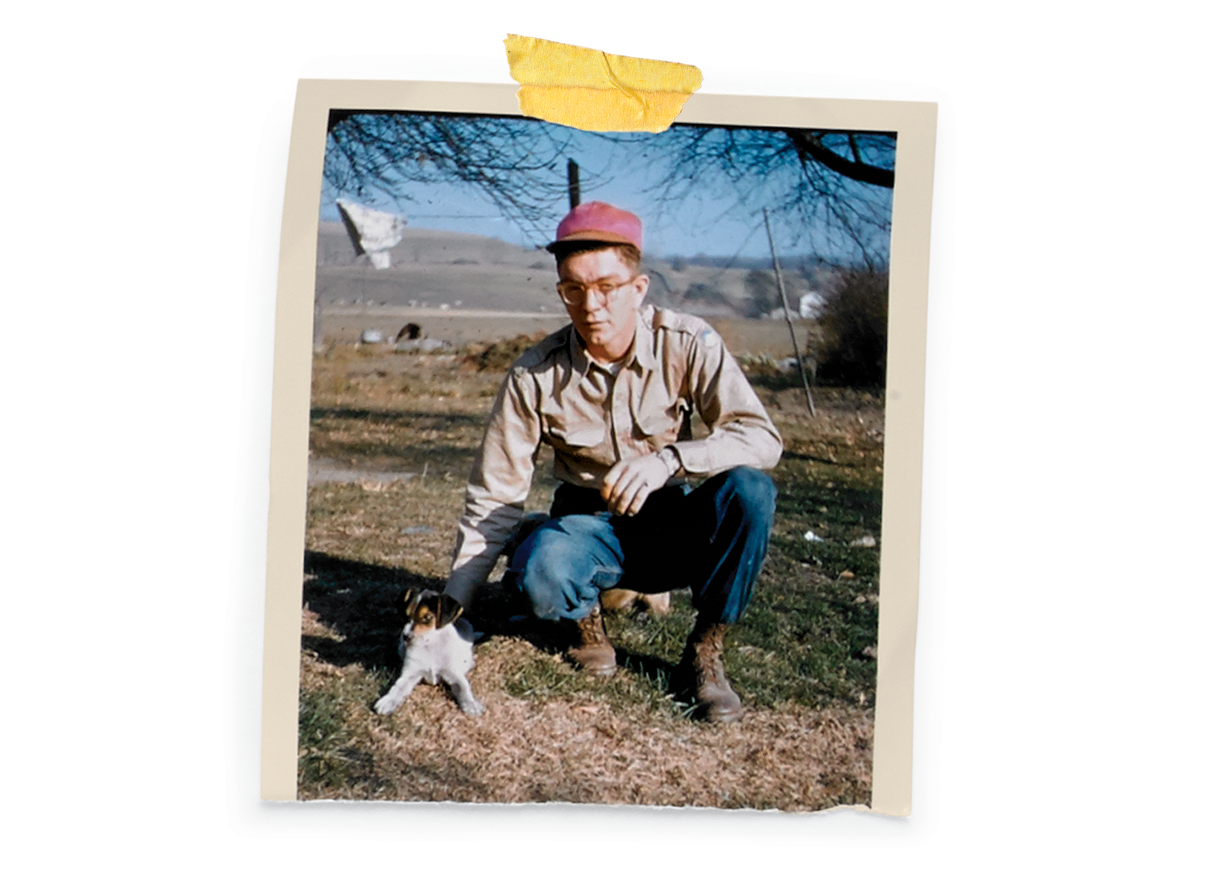
As I dropped into the woods, I found deer tracks going in all directions in the fresh snow. I was still-hunting parallel to the tracks when I detected movement ahead. I recognized it as a running deer, and in a scene I still replay, I aimed at the buck’s vitals, fired, and quickly levered another round into the chamber. Before I knew it, the fellow who spooked the buck to me was instructing me on how to punch out my tag and field dress my first deer. Paul and Henry were still sleeping when I “quietly” slipped back into the cabin.
From under blankets, Uncle Paul groggily asked, “See anything?”
The pandemonium that erupted on my answer is one of my most cherished hunting memories. That weekend was the only time I ever hunted with Uncle Paul and Uncle Henry, to whom I was something of a surrogate son.
Uncle Henry died a couple of months following the hunt after a series of heart attacks. I later learned the first one had occurred the day before I got my deer, which is why he slept in the morning that I killed my first, most memorable, buck.
The Deer that Changed Things
By Wayne van Zwoll
In 1966, when I hunted there, Michigan’s Upper Peninsula was already storied deer country. The U.P.’s vast forests harbored huge deer that lost none of their weight over campfires. Since the late ’40s, hunters had swarmed out of Detroit to crawl, bumper to bumper, across the Mackinac Bridge. “There were no deer south of Clare back then,” one of those hunters told me. Not in Michigan’s corn, not in its beanfields, alfalfa, or winter wheat.
Michigan’s favorite son, Fred Bear, first motored north for deer in ’29. He and two pals got to St. Helen, as far as their limited kitty would fuel their Model A. They pitched camp in a cold cedar swamp. They killed no deer. Six years later Bear would arrow his first, a small buck, at Blaney, a timbered tract in the U.P. In 1942, Bear and Jack Van Coevering of the Detroit Free Press returned to film a bowhunt there.
In bitter weather, hunting afoot, Bear fumbled an arrow to muff his only shot. That day, hands numb with cold, he could hardly get his boots and wet socks off over the lunch fire.
The men persevered, and later in the week they spied a buck up close. “In a split second he saw me,” wrote Bear. “I was not at full draw, but I had to shoot…” Van Coevering’s film brought deer hunting to people who had never seen a whitetail.
Less than a generation later, the south Michigan farms I’d once traipsed for pheasants grew bumper crops of deer. A creature once so rare that track sightings made news had colonized America’s breadbasket. To ensure the animals would thrive, many landowners posted their property to protect “their” deer.
My first deer license cost $5, and I shot a smoothbore slug gun.
Who would have thought then that hunters would one day scope shotguns and loose carbon shafts from bows with eccentric cams and optical sights? That they’d scout for deer with trail cameras and sit for them in railed treestands with cushioned seats, reporting action on cell phones? That earth claimed under the Homestead Act and broken for farms would one day sell not as arable land, but as deer-hunting property? That hunters would pay thousands of dollars per week hoping to waylay a whitetail from a woodlot?
Much has changed in Michigan since I killed my first deer. Deer have also changed Michigan.
The Buck of Twenty-Seven Break
By Dean Burns
In 1950, my parents moved to the flat land of the Mississippi Delta, near Greenville, located on the river halfway between Memphis and Vicksburg. Greenville was in the heart of the greatest deer habitat in the country. Thousands of acres of hardwood forest offered the perfect catalyst for deer resurgence.
The era of the hunting clubs had begun. My father worked for the US Gypsum Company, a manufacturer of forest-product building materials. The company had a large parcel of land north of Greenville between the levee and the river. Known as Catfish Point, this particular plot of river land had been in a game preserve controlled by the Mississippi Game and Fish Commission. Following 10 years of deer stocking and protection, the state considered it adequately populated with deer and opened Catfish Point for hunting. US Gypsum leased it as a hunting club, and my father was fortunate enough to be one of the charter members. I remember his official membership button with the number 13 printed in bold numerals.
On a cold, sleeting December morning in 1953, when I was home from college for the holidays, my father and I drove north of Greenville about 20 miles, and crossed the levee at a place called the Twenty-Seven Break. It was a low spot in the levee that had failed in the 1927 flood that nearly wiped out Vicksburg. The dirt humps of the failed levee had grown up in trees, resulting in a series of low rolling ridges. This was the opening day of the second deer season, and I was shooting a 12-gauge loaded with slugs. Dad dropped me at my stand, which was a spot on the ground next to a tree large enough to lean against. Just out in front, I could see a well-used game trail.
I sat against the tree in the chilly rain for a long time before I heard the first barks of the chase dogs, followed quickly by the appearance of three deer on the ridge across from my stand. They stopped on top of the ridge for what seemed like an eternity. Then the dogs barked again and the deer continued single-file down the ridge and up the trail that crossed in front of me.
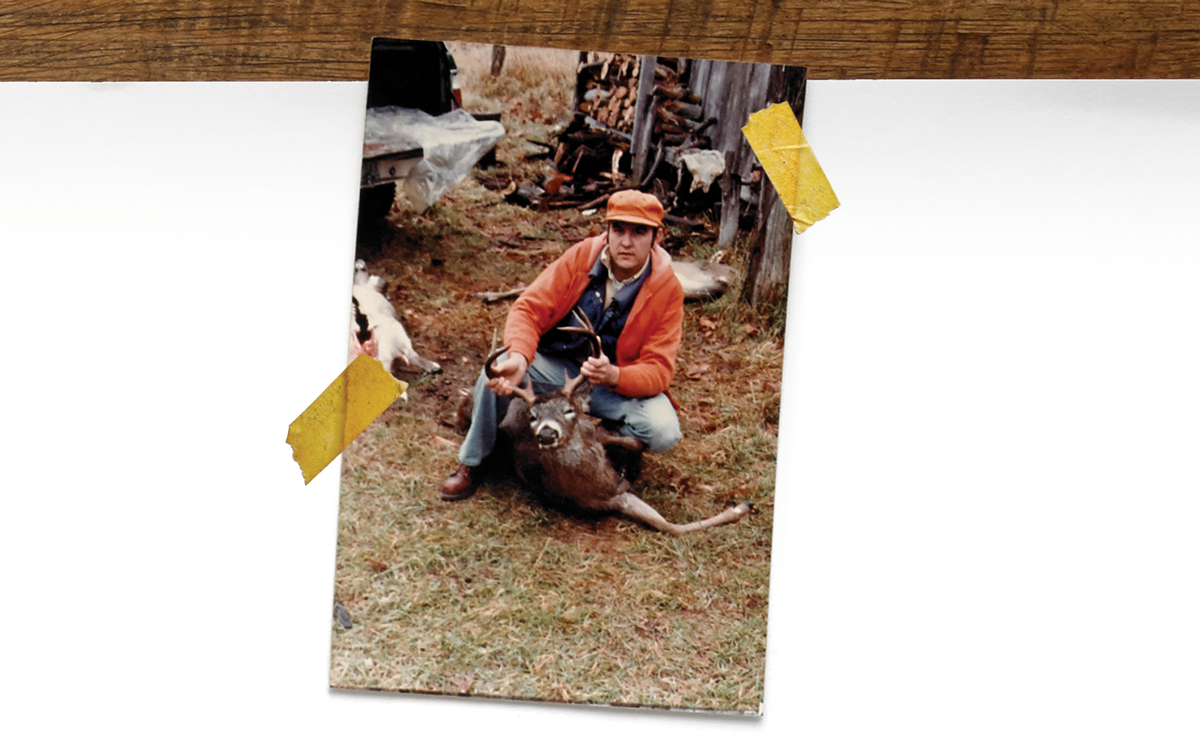
I had never before seen a buck while hunting, but here were three within 30 yards of my stand. A 10-point was in front, an 8-point just behind him.
As I squeezed the trigger, the 10-point turned off the trail, leaving the 8-point in front of my sights. I have had plenty of memorable hunting experiences since, but none equal my first deer in the sleet on Catfish Point.
First Person
In the fall of 1960, my father took my brother and me to a state forest near my home in Morgantown, West Virginia, to pick pawpaws at a patch he remembered from his childhood. We were picking along a ridgeline when we had to cross a small stream. In the soft mud was a perfect deer track, the first any of us had ever seen. On Monday morning, when I returned to school, I couldn’t wait to tell my friends. For weeks after that, people I didn’t even know would stop and ask, “Did you really see a deer track?” —Melvin Forbes
Trophy Case
_By __Steve Wagner_
I grew up during the 1970s, and worked at a taxidermy shop in my hometown in northwest Oklahoma. At that time, it didn’t take much of a buck to be considered a trophy. People oohed and aahed over an 8-point that wouldn’t get a second look today. We mounted lots of folks’ first deer that were sixes or smaller. As the years went by, the novelty of just killing an adult deer wore off. The definition of trophy changed.
I consider the deer restoration period to be the golden era of wildlife management across much of the country. Lots of biologists spent their time in the field really handling wildlife: netting, relocating, essentially making up their own jobs as they went along, because they were pioneering a field that was new to everyone. Over time, wildlife management has evolved into more of a profession about managing people, not critters.
Photographs by Cliff Gardiner & John Keller
